Can a Monolithic Dome home have a loft? A stairway? An elevator? A basement?
My answer is an emphatic yes to each, followed by an equally emphatic reservation: Carefully analyze your need and/or desire for any of these features and consider the alternatives.
A Loft
A Monolithic Dome home with a loft — one with a master bedroom that overlooks the living room, or one that the grandchildren can hibernate in when they visit. It sounds so Hollywood-ish and so fun, and it’s definitely possible. A loft may even be relatively economical if it’s built over bathrooms that are near the dome’s center. It can also work well in domes where its inclusion does not require additional height. But if more height is needed, then the cost of a loft generally outweighs its value.
When that happens, it’s usually time to reconsider. If your plans included a loft as a way to provide more space and save money, you probably went in the wrong direction — or higher instead of wider. A dome’s geometry can be changed in many ways, and its often most expensive to go up. A floor for a loft costs more than a floor for the ground, and, for the same price, you can often build more square footage on the ground than in the air.
Consider also how having a loft affects a lifestyle: Lofts are upstairs. Someone has to climb those stairs just to get up there, to put things away and to clean. As we age, that gets more and more difficult. When planning a home, the wise planner considers the future as well as the present. Finally, remember that by its very nature, a loft requires a stairway.
Stairways and Elevators
Stairways and elevators may be a necessity in Monolithic Dome homes built on certain terrain. For example, the ground level of domes exposed to surging tides and hurricanes along a seacoast are designed with huge openings through which water can pass. Such domes must have at least one stairway leading from the ground to the first-floor and all other floors of living area. Multi-story domes constructed in a hilly or mountainous area have a similar need for stairs.
In Monolithic Dome homes where stairways are an obvious need, consider an elevator also. That again is thinking about the future as well as the present. A day may come — possibly quicker than you may want it to — when you or a family member can no longer maneuver those stairs.
Stairways come equipped with their own set of pros and cons. They’re definitely not something that every home needs, and they are expensive, so their inclusion should be carefully evaluated.
Often viewed as a decorative, beautifying feature, stairways are natural separators. Children use them to go upstairs to get away from parents. Parents use them to go downstairs, away from the kids. Obviously, no one goes up or down without some motivation. But as we get older or in some way handicapped, that process becomes more difficult, sometimes impossible.
Stairways are expensive. They cost more than just the lumber it takes to make them, and they use square footage of floor space on both of the floors they connect. Example: A stairway with a three-foot width requires about 50 square feet of each floor or a total of 100 square feet. At a conservative $80* per square foot, that’s $8,000. In most homes, it’s also difficult to place a stairway without interfering in or significantly altering an area on one level or the other.
Basements
Basements are a holdover from earlier times. People used them as storm shelters; for storage of food, no longer used household items and out-of-season clothing; as a laundry area; or for added living space.
It’s definitely possible to construct a Monolithic Dome home with a basement. We have even built domes over rectangular or square basements, but that’s a more difficult task. The best and simplest way is to dig a hole to the level of the desired basement and build the dome beginning at that level. Such a plan might require an Airform that includes a stem wall for the basement under the dome. Once the dome is completed, you backfill against it. This process produces the best basement possible — one that’s super-insulated, structurally sound, and that can even be built in areas where the ground will cave in a conventional basement.
On the other hand, why would you want a basement in a Monolithic Dome? In a conventional home, a basement could include a storm shelter, but your entire home provides such shelter when it’s Monolithic.
Then too, putting in a basement usually requires the use of wood floors that creak and groan, and that, over time, might get devoured by termites. It’s a fact: a slab on grade is the most permanent of all floors. Basements also expose a home to flooding, the world’s costliest natural disaster.
Finally, basements are pricey. Our modern building codes stipulate that basements must be built with generous – and I do mean generous – openings for daylight and flooding. That adds to their cost. Unless it’s a dome designed to be built with a walk-out and positioned on a hill, a basement is a superfluous expense.
Like plans for a loft, stairway or elevator, those for a basement may call for some prudent reconsideration. Here again, the wiser alternative might be a geometrical one: this time, going wider instead of deeper. That could more easily and economically get you the additional living space you may have thought was only possible with a basement.
* Note: Quoted prices were valid in 2004, when this article was originally published.
A few of our featured dome homes with Lofts and Stairways
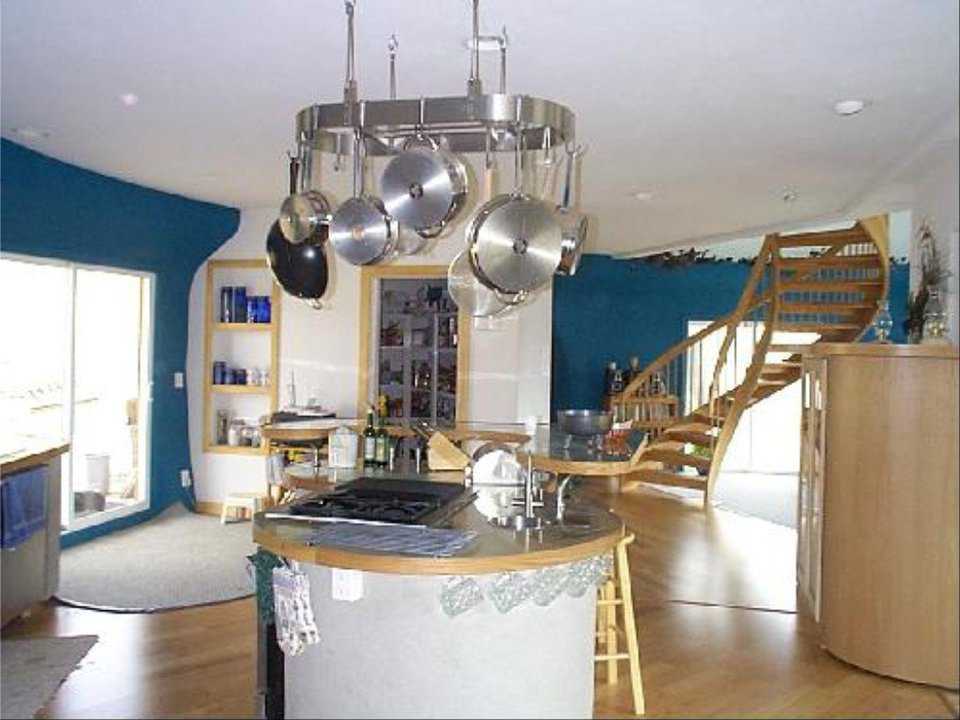
Shangrila, near Aguilar, Colorado - A curved staircase leads from the gourmet kitchen to the upper levels of this 5600 square-foot Monolithic Dome home, that consists of 8 interconnected units.
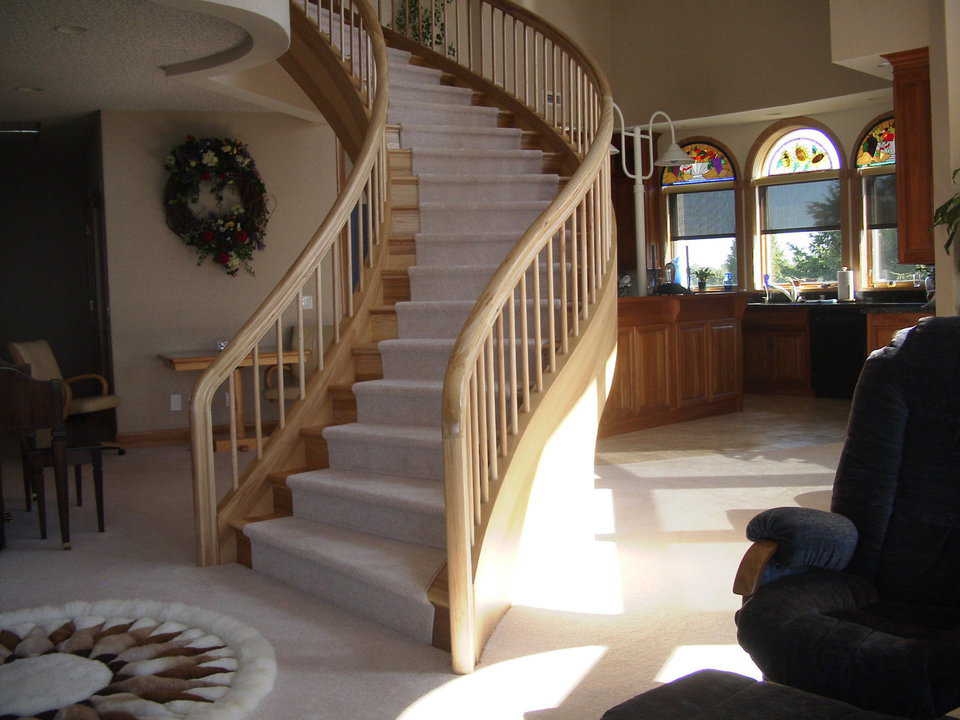
The Disappearing Dome in Manitowac, Wisconsin — Fashioned using natural hickory, a sweeping stairway leads from the main floor to the third level of this Monolithic Dome home with 4000 square feet of living space.
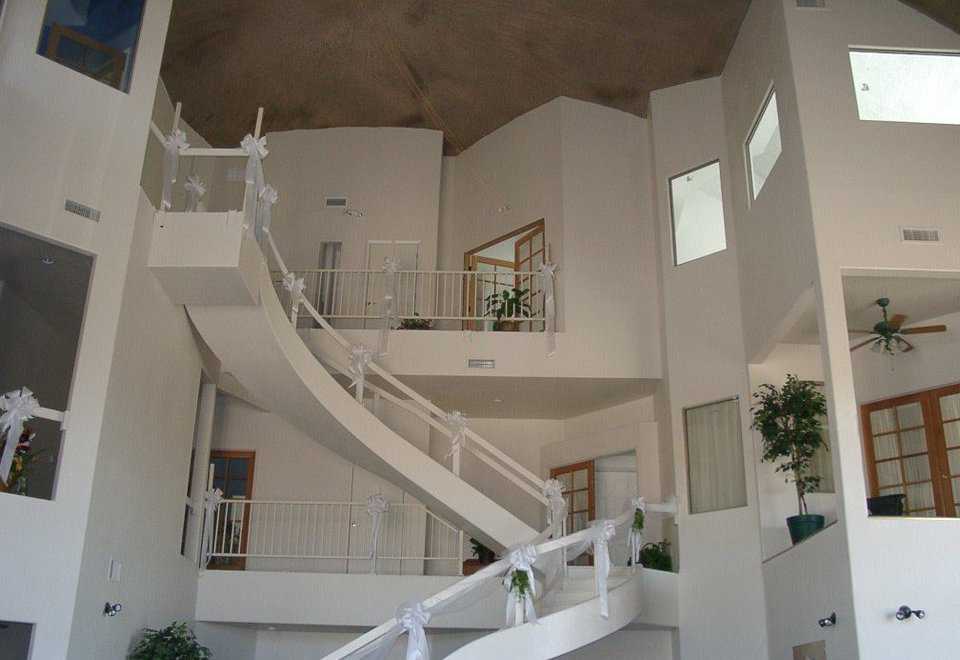
Yuma Dome in Yuma, Arizona — This staircase leads to the second and third levels in this multigenerational dome that encompasses eight suites, each with at least one bedroom, bathroom, sitting room, laundry area and closets. Dome has 3 stories, 84’ diameter, 40’ inside height, 11,000 square feet of living space.
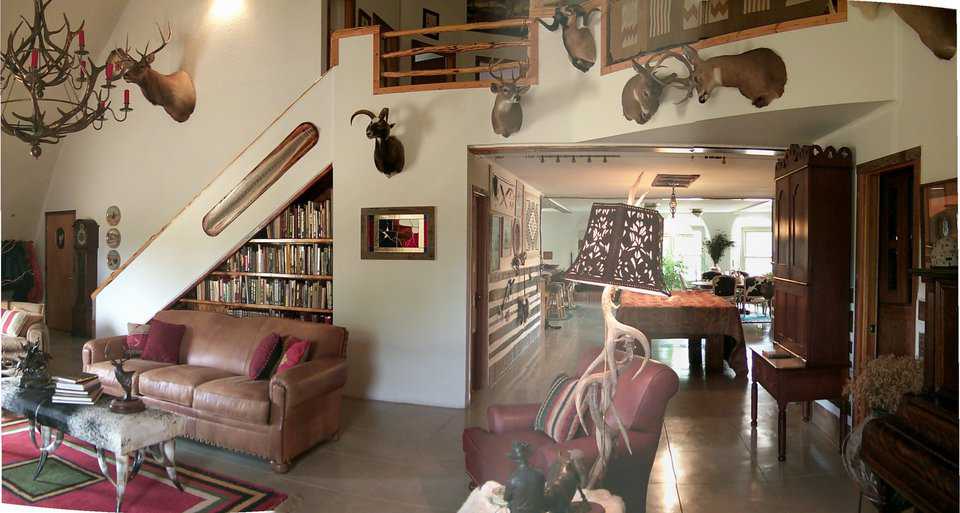
Antelope Springs in Blackwell, Texas — This Monolithic Dome hunting lodge has 5200 square feet of living space, a 60’ diameter and a 30’ height. Its owners call it their “Dome on the Range.”

Eye of the Storm on Sullivan Island, South Carolina — A white oak, hand-crafted stairway, following the slope of the interior wall, leads to the third level of this dome, a prolate ellipse, 80′ × 57′ × 34′, with four levels and 3500 square feet of living space.

Garlock Home in the Colorado Rockies — It consists of 2 domes merged into a unique, kidney shape: a 32’ diameter garage gently blends into the larger, 50’ diameter shell placed 9’ below it. Home has 3 levels and 3800 square feet of living space.
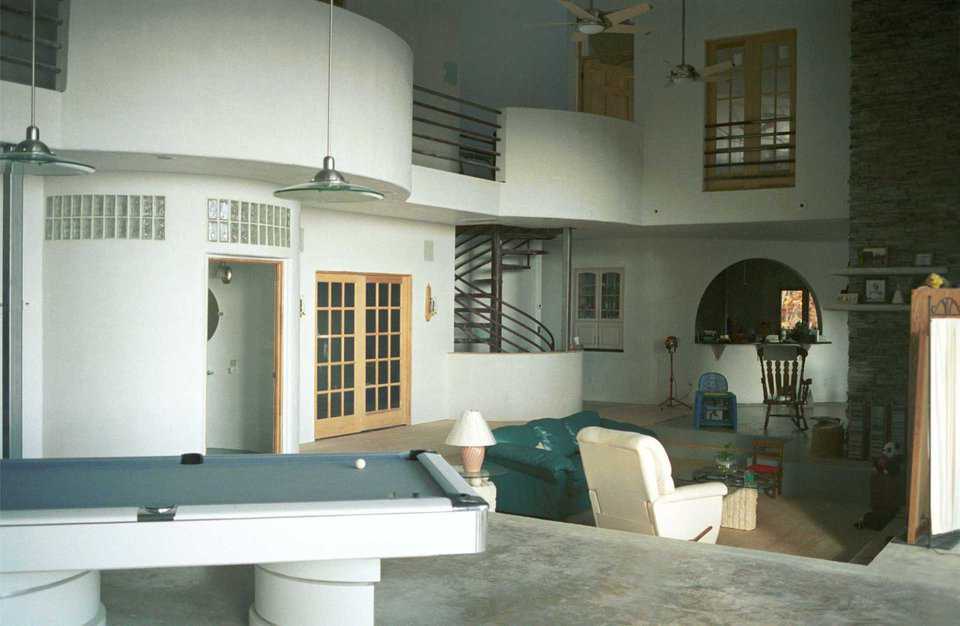
Monolithic Dome Home in Centennial, Colorado — At this 4500-square-foot home, the solid oak and ribbed glass front doors open to a tiled entry and a dramatic view of the curved oak staircase, suspended from a 14-foot-high, arced stone wall.
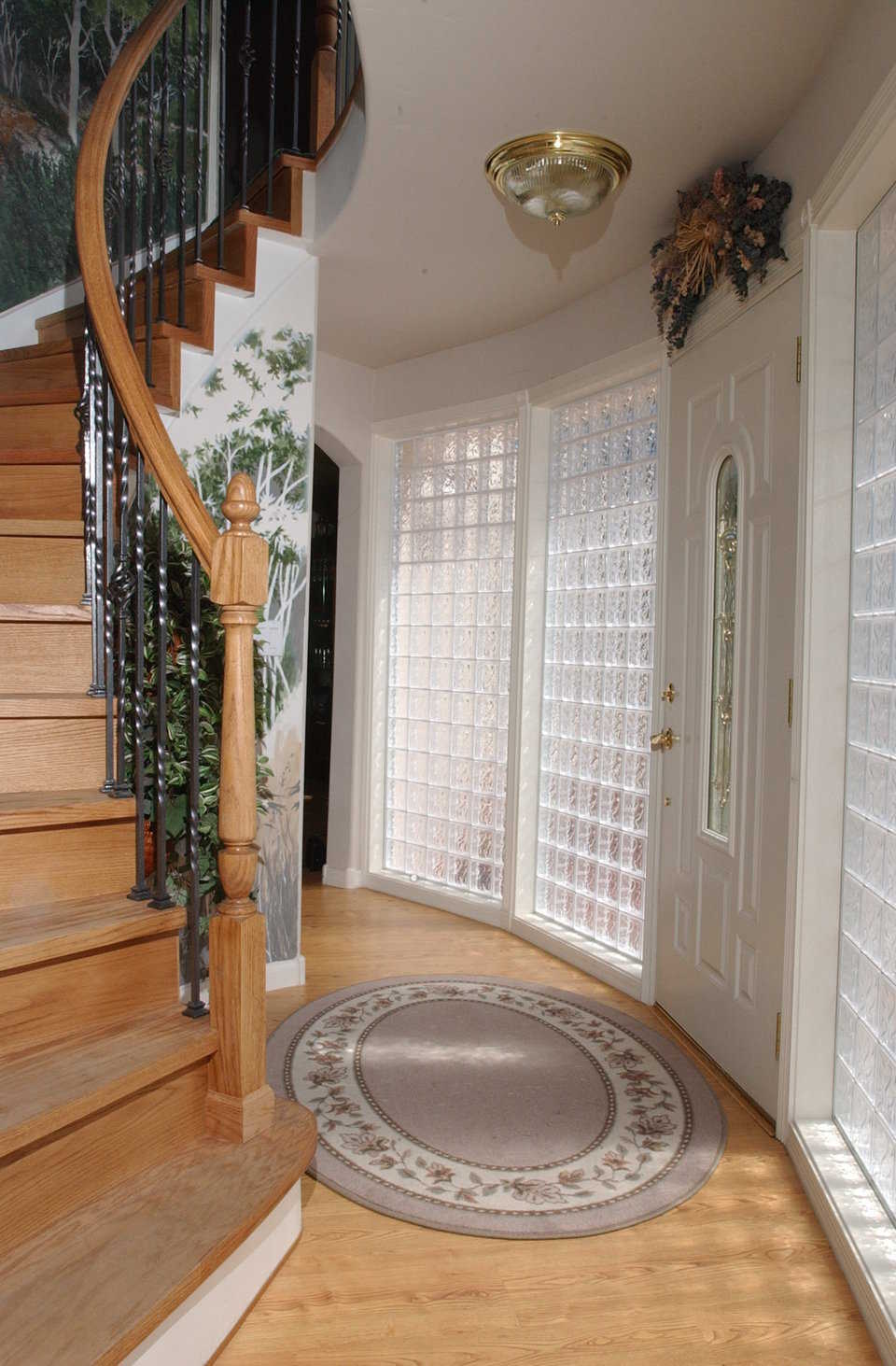
Le Chateau de Lumiere in Mesa, Arizona — A winding stairway intersects the middle of the entry area and curls gently up to the second floor balcony at the Monolithic Dome home of Architect Rick Crandall. It consists of two towers, each with a diameter of 23’ and vertical wall 16’ high.
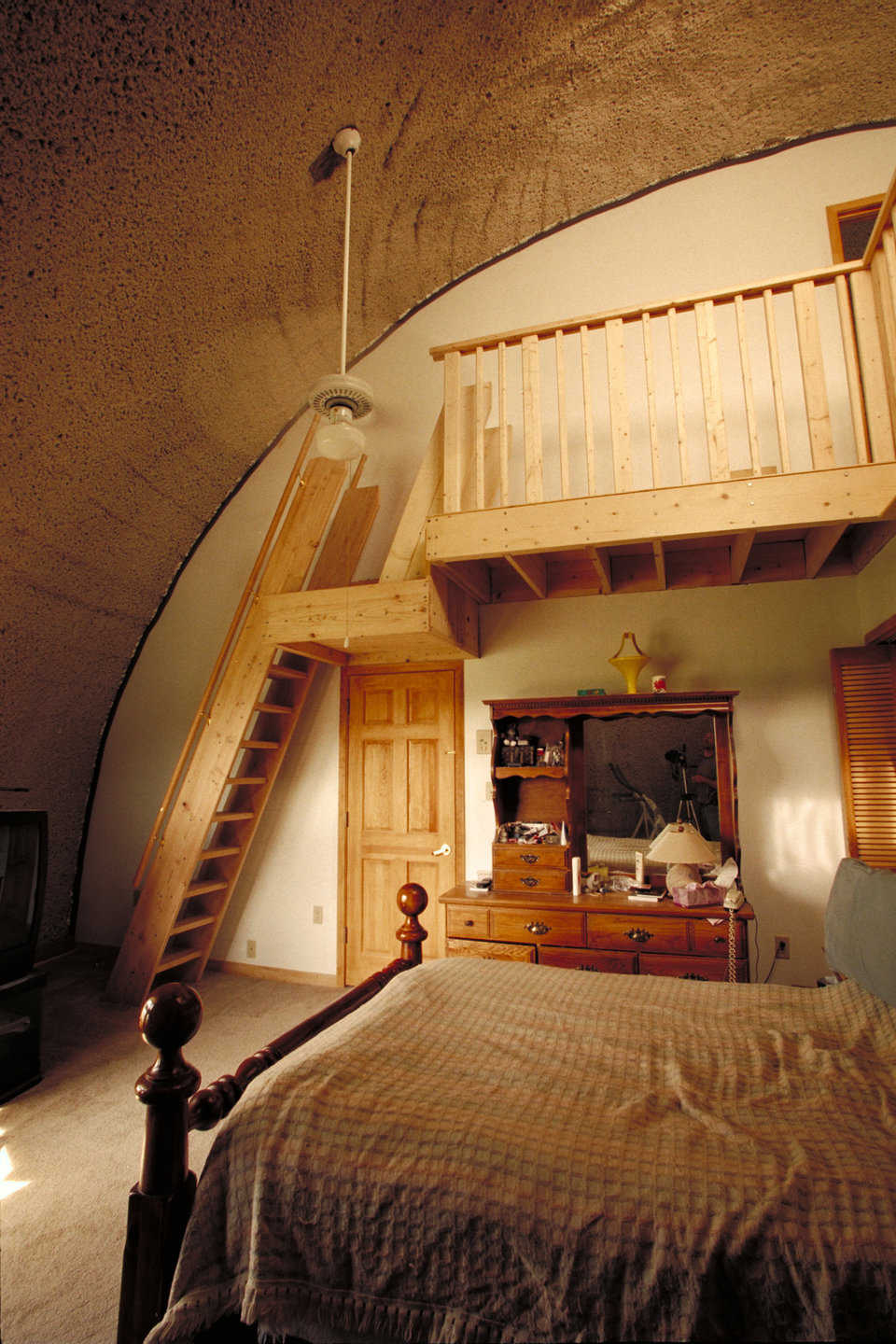
House of Cards in Ann Arbor, Michigan — So nicknamed because its construction was initially financed with credit cards, this Monolithic Dome home sports a wooden “monk” staircase, standing about a foot away from the wall and following its curvature. Made like wooden ladders, monk stairways were first used in monasteries.
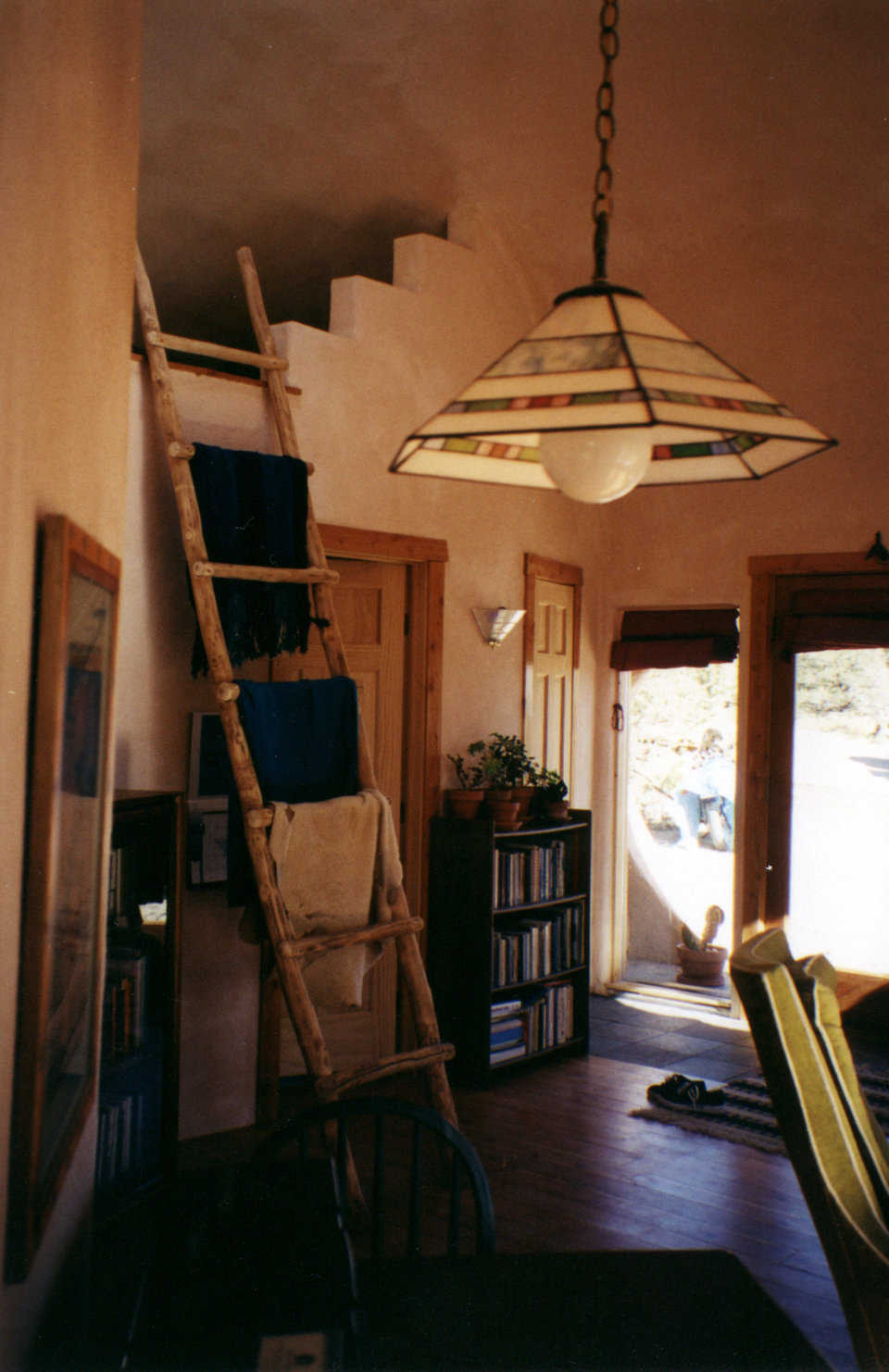
Ananur in the Sangre De Cristo Mountains, Colorado — A ladder joins the two levels of this 35′ × 15′ sphere, built at 8500 feet above sea level and heated only with a 30,000 BTU propane fireplace.
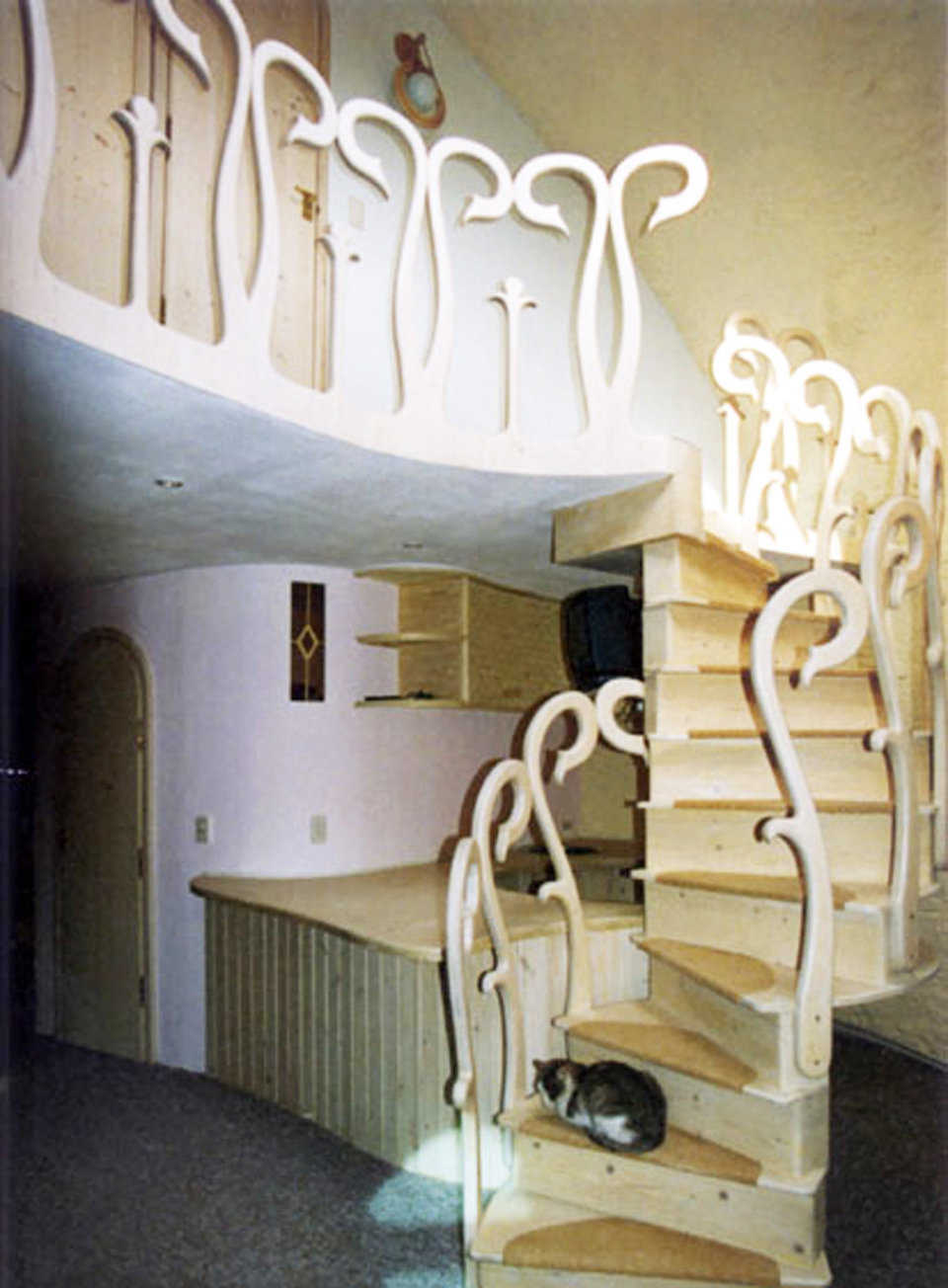
First Monolithic Dome home in Moscow, Russia — Its builder and graduate of a Monolithic Workshop said, “We spent a lot of time on the stairs. We had to come up with an inexpensive way to build it. Most troublesome was the railing because of the spiral form. But … we found a way ….”
